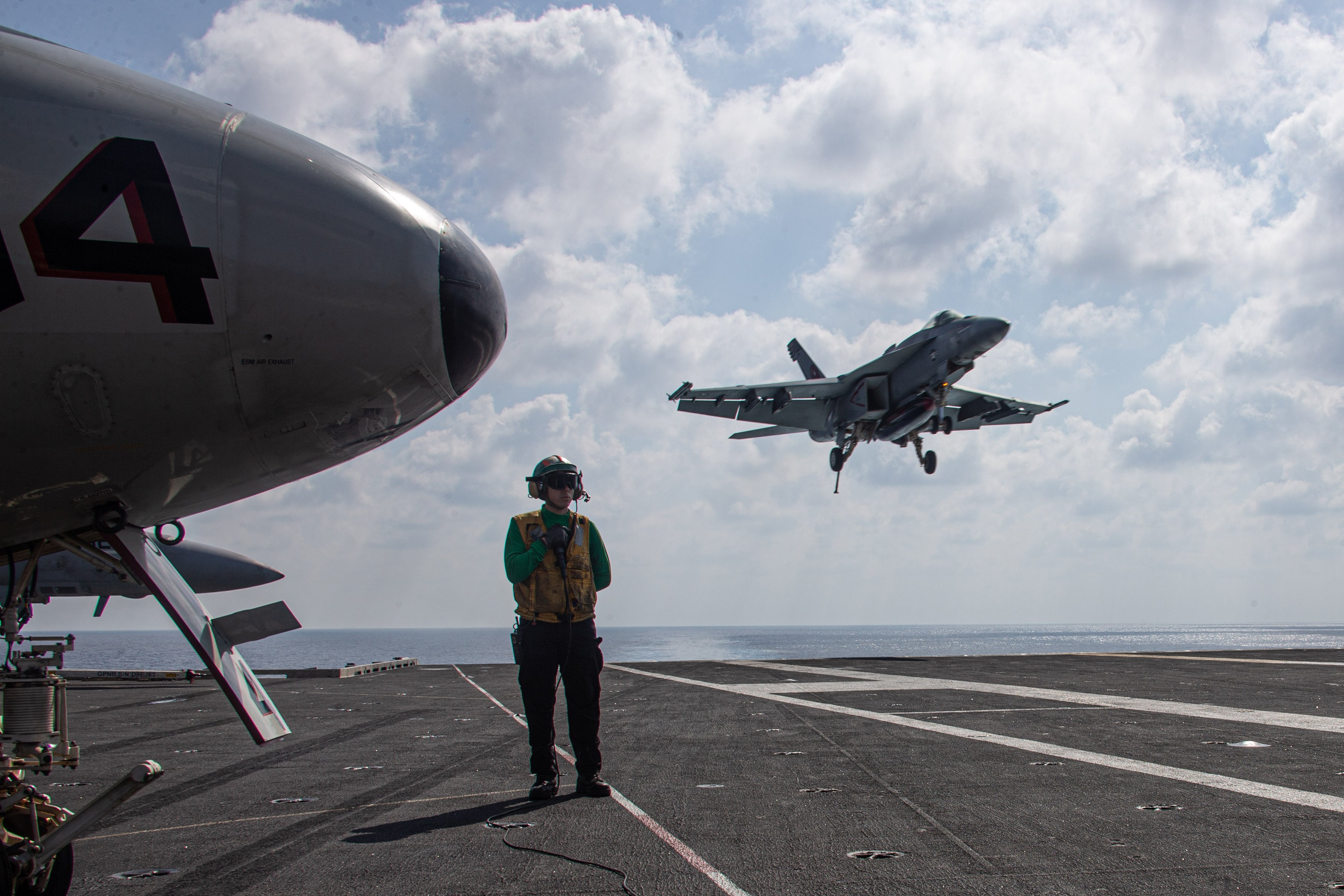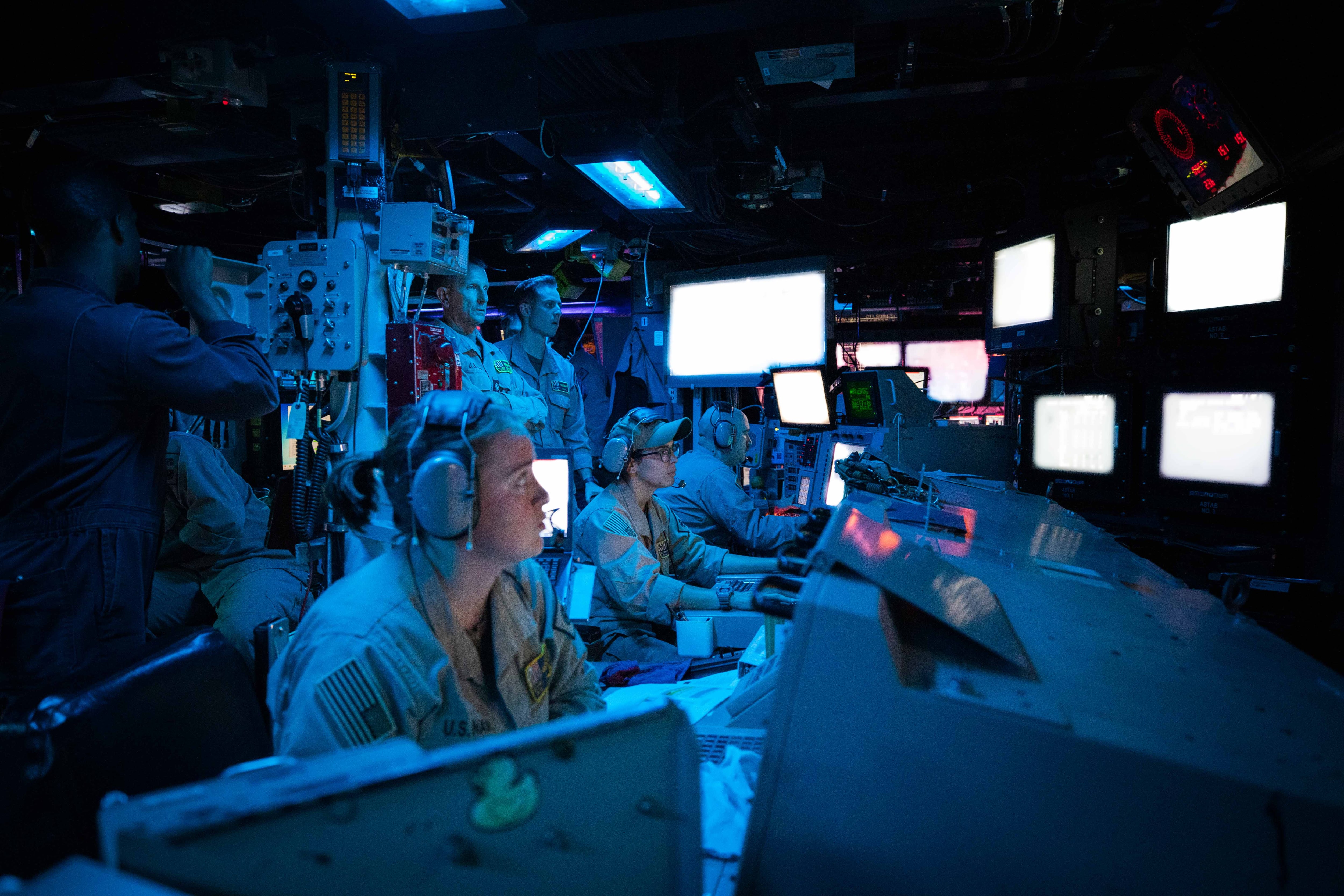It has been more than six months since the aircraft carrier Gerald R. Ford and its strike group left the East Coast on May 2 for the flattop’s first full deployment.
But as Israel’s war with the Palestinian militant group Hamas rages on — along with fears that the conflict will engulf the region — it remains unclear when the Ford, its warships and the thousands sailors onboard will be able to head home.
“We can confirm that the Ford will remain in the Eastern (Mediterranean Sea) for the time being,” Defense Department spokesman Army Maj. Charlie Dietz told Navy Times Monday.
On Oct. 17, Defense Secretary Lloyd Austin ordered Ford’s initial deployment extension, 10 days after Hamas attacked Israel, prompting retaliatory bombing of the Hamas-controlled Gaza Strip and an Israeli ground operation there that is still underway.
The attack by Hamas, a militant group that has been designated a terrorist organization by the U.S. and European Union, kicked off what quickly became the bloodiest conflict between Palestine and Israel since the 1973 Arab-Israeli War.
RELATED

Ford was quickly dispatched to the eastern Mediterranean after Hamas’ Oct. 7 attack.
Its strike group includes eight squadrons of attack and support aircraft under Carrier Air Wing 8, the destroyers Thomas Hudner, Ramage and Roosevelt, as well as the cruiser Normandy.
While operating in the Red Sea, the Carney shot down a barrage of air drones and missiles on Oct. 19 that Department of Defense officials later said were fired toward Israel by Iran-backed Houthi rebels in Yemen.
The Dwight D. Eisenhower carrier strike group was supposed to relieve Ford in the Mediterranean this fall, but that armada has been sent to the Middle Eastern waters of U.S. Central Command, where it became the first carrier to operate there since August 2021.
The Pentagon has flooded the region with U.S. warships and fighter jets since Oct. 7, part of a move to dissuade Iran or its proxies from turning the Israel-Hamas war into a broader conflict.
But these assets have not stopped attacks on U.S. ground forces in Iraq and Syria, which have sustained regular attacks by Iran’s proxies.
While most of the more than five dozen attacks have been largely ineffective, at least 60 U.S. personnel have reported minor injuries. Most often those have been traumatic brain injuries from the explosions, and all troops have returned to duty, according to the Pentagon.
The Associated Press contributed to this report.
Correction: An earlier version of this report misstated the ships assigned to the Gerald R. Ford carrier strike group. The destroyer Carney is assigned to the Dwight D. Eisenhower carrier strike group.
Geoff is the managing editor of Military Times, but he still loves writing stories. He covered Iraq and Afghanistan extensively and was a reporter at the Chicago Tribune. He welcomes any and all kinds of tips at geoffz@militarytimes.com.




